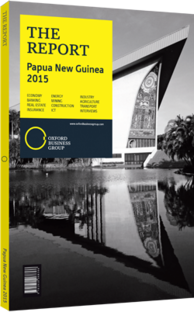PNG real estate prices rise with rapid urbanisation
The residential real estate sector has soared in recent years, as the government wrapped up construction on the $19bn PNG liquefied natural gas (LNG) project in Port Moresby. With rents and home prices showing a sharp increase, there is a growing concern that home ownership remains out of reach for the average citizen. If the strong GDP growth projections for 2015 are any indication, PNG will continue to grapple with elevated residential prices. While inflation is expected to ease in 2015, an ongoing shortage of mid-range and affordable housing units will see residents confronted with high property prices, though government efforts to roll out new low-cost units could change this situation over the medium term.
Resource Rush
The PNG LNG project had an significant impact on real estate activity, with the sector outperforming much of the rest of the economy in recent years, bolstered by knock-on benefits from rising foreign direct investment (FDI) and urbanisation. The country’s urban population grew from roughly 700,000 in 2000 to 1.2m as of 2012, according to a report by the Alfred Deakin Research Institute, and is expected to reach 3.5m by 2030.
The PNG LNG project, which began production in April 2014, has already started to yield economic benefits, with PNG set to record the world’s highest GDP growth in 2015; the Asian Development Bank (ADB) expects 15% growth, though falling oil prices have darkened the near-term forecast for LNG revenues.
Inflation
Growth has been accompanied by rising inflation, with housing prices recording double-digit average annual growth in 2010-14. The Bank of PNG (BPNG) reported that annual headline inflation was 6.6% in the fourth quarter of 2014, up from 2.9% the year before. Don Poyle, the former minister of treasury, told media in June 2014 this was being driven by an influx of public and foreign capital. Although this has had a positive impact on the economy, it has also seen rental and property prices soar. As PNG LNG construction accelerated, 2011 saw a marked rise in the housing consumer price index (CPI), which rose to 92.3. Inflation continued on a strong upwards trajectory, reaching 101.8 in 2012 and 112.7 in 2013. By the end of 2014, it had hit 126.3.
As a result of capital inflows and urbanisation, rental rates for high-end residential units in Port Moresby doubled between 2008 and 2012, to PGK5500 ($2080) to PGK8000 ($3000) per week, with developers in the segment earning returns of 10-15% on new projects. By 2012 the median price for high-end houses in the city stood at $670,000 and $200,000 for apartments, according to a report in Property Observer, while availability of mid-range and affordable units simultaneously declined. The IMF warned that the high-end expat market was becoming saturated as early as 2011, with concurrent increases in building costs creating significant challenges for new builds, particularly in the mid- and low-end segments.
Unaffordable
Indeed, Community Housing Limited (CHL), a non-profit affordable housing company active across Asia, reported in August 2014 that the average employed Port Moresby resident can afford home prices up to PGK240,000 ($90,800), which should be enough to cover the cost of a 400-sqmetre, two-bedroom house and land package, although rising inflation has made this all but impossible.
“An ‘affordable dwelling’ for sale is more than double this price on the market, and private rents are exorbitant. Close to 97% of the land in PNG is customary land and unable to be developed for housing and other uses. The shortage of affordable housing is a major challenge in PNG,” CHL’s report noted.
Real estate inflation continued to rise last year, with BPNG reports of a 14.9% rise in the CPI’s housing category in the fourth quarter of 2014 painting a gloomier forecast for renters and buyers. However, the ADB projects inflation will steady at 7% in 2015 and 5% in 2016, while new state initiatives to deliver affordable housing units should offer mid-term relief to first-time and low-income homebuyers (see analysis).
You have reached the limit of premium articles you can view for free.
Choose from the options below to purchase print or digital editions of our Reports. You can also purchase a website subscription giving you unlimited access to all of our Reports online for 12 months.
If you have already purchased this Report or have a website subscription, please login to continue.

